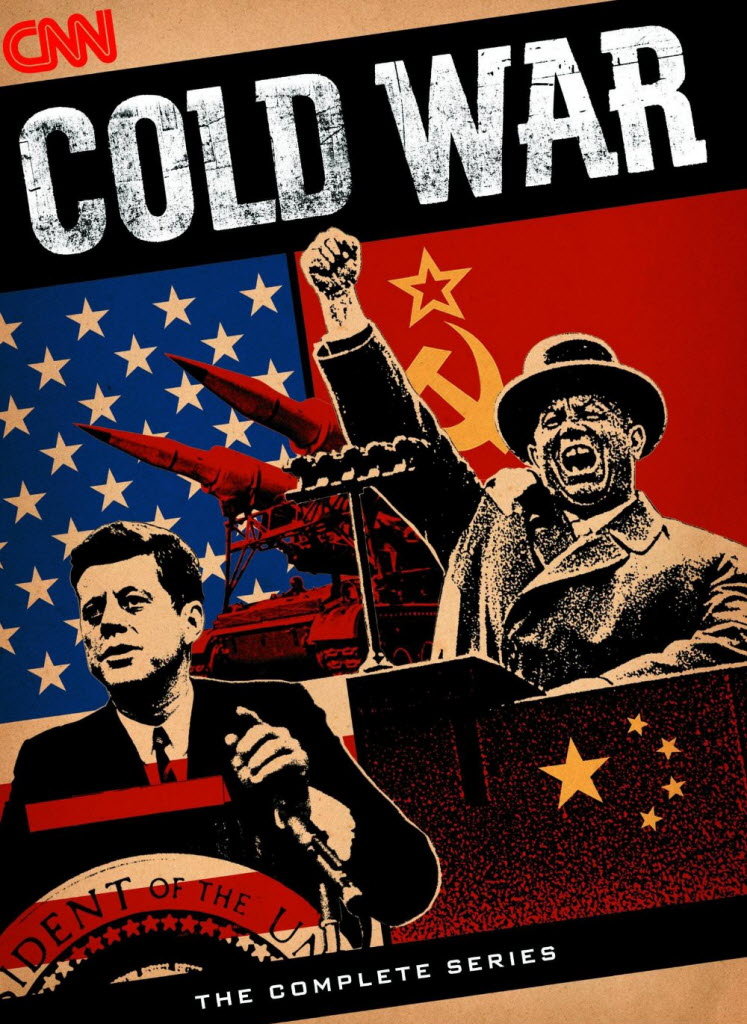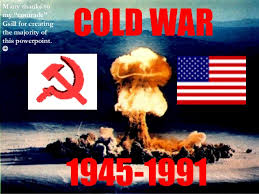If America ‘Won the Cold War,’ Why Is There Now a ‘Second Cold War with Russia’?
IN FOCUS, 26 Feb 2018
The Ongoing Role of False Narratives and Historical Fallacies
14 Feb 2018 – Cohen has been warning about the danger of an American–post–Soviet Cold War for nearly 20 years. During those years, representatives of the US political-media establishment have insisted that such a recapitulation was impossible because Russia was too weak; any US-Russian conflicts were regional, not global, and limited; and because the two countries now had the same social-economic system, capitalism, there was no ideological conflict between them. Any attentive observer of relations between Washington and Moscow at least since the early 2000s could have seen the unfolding reality, but only recently have authoritative representatives of the bipartisan American establishment acknowledged the new Cold War or “second Cold War with Russia.” It was openly declared by the highly influential and fully bipartisan Council on Foreign Relations. It is implicit in the US Department of Defense’s February Nuclear Posture Review, which specifies Russia as a global threat. And it underlies daily Russiagate allegations that “the Kremlin attacked American democracy” in 2016 and is now attacking democracies around the world. Indeed, these hyperbolic accounts often make “Putin’s Russia” appear to be more menacing, invidious, and looming than was the Soviet Union.
Which, Cohen continues, if “American won the Cold War” that began in the late 1940s, as has long been almost universally asserted in the United States, how to explain today’s “second Cold War with Russia”? This raises two large historical questions little discussed today, certainly in the mainstream mass media. How and when did the preceding long Cold War end? And when and where did the new Cold War begin? There are two conflicting explanatory narratives regarding both questions.
Read more: Russiagate or Intelgate? – Stephen Cohen
Almost since the moment the Soviet Union ended in December 1991, the orthodox, consensual American answer to the first question—in politics, the media, and in textbooks—is that the United States, having defeated Soviet Communist Russia, “won the Cold War.” The implication is that post-Soviet Russia was a defeated nation analogous to Germany and Japan after World War II and therefore should do Washington’s bidding at home and abroad. The dissenting answer is very different: The 40-year Cold War ended not with the end of the Soviet Union in December 1991 but earlier, in 1988–90, through negotiations by the leaders of the two countries at that time—Soviet President Mikhail Gorbachev and American Presidents Ronald Reagan and George H.W. Bush. The conclusion to be drawn is that Russia and America had jointly ended the Cold War as partners and should have now moved to a lasting post–Cold War partnership in world affairs. Cohen himself has advocated this interpretation at length in his book Soviet Fates and Lost Alternatives, but the most authoritative account is by Jack F. Matlock Jr., Reagan’s and Bush’s ambassador to Moscow, in his books Reagan and Gorbachev: How the Cold War Ended and Superpower Illusions.
Regarding the causes and onset of today’s “second Cold War,” there are also two conflicting interpretive narratives. Here too there is an orthodox, virtually consensual one: Today’s Cold War began shortly after Vladimir Putin became Russia’s leader in 2000, and he is solely to blame for it. But here too there is also a false narrative and questionable “facts.” Adumbrations of another Cold War were amply apparent in President Bill Clinton’s approach to post-Soviet Russia in the 1990s, well before Putin came to power. Clinton took a decorative public approach to Russia under President Boris Yeltsin, lauding him as America’s “partner and friend.” In reality, Clinton pursued winner-take-all policies consistent with viewing Russia as a defeated power, presiding over a massive intrusive crusade to shape that former rival into “the Russia we want” (see Cohen’s book Failed Crusade: America and the Tragedy of Post-Communist Russia); beginning the expansion of NATO, now on Russia’s borders; and bombing Moscow’s traditional Slav ally Serbia, in 1999, despite Yeltsin’s protests. (Indeed, the extreme vilification of Putin by former members of the Clinton administration, including Hillary Clinton, who equated him with Hitler, are not unrelated to their unwise Russia policies of the 1990s—loudly applauded, it should be added, by media journalists now also in the forefront of demonizing the current Kremlin leader.)
Read more: Russophobia a futile bid to conceal US, European decline
Putin’s subsequent views of the United States and Russia’s place in the world were strongly influenced by those aggressive American policies of the 1990s, but he too came to power, as had Gorbachev and Yeltsin, seeking partnership with Washington, but an equitable one. He later said he had to “lose that illusion,” though exactly when he did so is not clear. Was it when President George W. Bush, with whom Putin initially sought a strategic partnership, withdrew unilaterally from the Anti-Ballistic Missile Treaty in 2002; when Bush accelerated NATO expansion toward Russia’s borders; or when the Bush administration declared in 2008 that even Ukraine and Georgia, Moscow’s “red lines,” would certainly one day be members of NATO?
In short, two historic opportunities for a post-Soviet US-Russian partnership—two chances to avert another Cold War—in the early 1990s and again in the early 2000s were lost. Both were squandered in Washington, not in Moscow.
Cohen also points out that the preceding Cold War was accompanied by a robust American public debate, especially from the late 1960s through the 1980s, as to the varying degrees of responsibility on the part of both Washington and Moscow for the history and dangers of that decades-long confrontation. The debate included rethinking US policy over the years and certainly contributed to Reagan’s great détente with Gorbachev, an even more revisionist thinking leader. No such debate is permitted in the American mainstream today, no challenges to the false narrative that the “second Cold War” began under Putin and is solely his fault—not in Congress or in the media—even though the dangers are even greater.
Cohen concludes by reiterating the greater dangers he has specified for several years: the political epicenter of the new Cold War is in Ukraine, on Russia’s borders, not in faraway Berlin; today’s Kremlin leader has been demonized in ways that Soviet Communist leaders were not; and, also unlike during the long Cold War, there are virtually no anti–Cold War political forces in the bipartisan establishment, apart perhaps from the beleaguered President Donald Trump. Still worse, there are more recent dangers without real precedent during the preceding Cold War. The Department of Defense’s Nuclear Posture Review proposes new nuclear weapons and thinking that abet the possibility of an American first use of those doomsday devices. Meanwhile, China is not Russia’s rival, as it was then, but now its ally. And both Western and Eastern Europe, upon whom the new American cold warriors are counting, are growing increasingly disenchanted with their policies toward Russia. (By 1985, Moscow had few important willing allies in that Cold War. How many will Washington have in the future?) And last, but far from least, there are the Russiagate allegations that hinder Trump’s every attempt to diminish existential dangers of the new Cold War by negotiating with Putin, and indeed denounce those initiatives as seditious.
Meanwhile, we are left with false narratives about how the new Cold War arose, long before Trump or Putin, and thus without compelling reasons to rethink US policy toward Russia, past or present. Policy-making without history, or based on historical fallacies, can be exceedingly perilous. But history, it seems, no longer matters.
_______________________________________________
Stephen F. Cohen is a professor emeritus at New York University and Princeton University. His Soviet Fates and Lost Alternatives: From Stalinism to the New Cold War and his The Victims Return: Survivors of the Gulag After Stalin are now in paperback.
Go to Original – thenation.com
DISCLAIMER: The statements, views and opinions expressed in pieces republished here are solely those of the authors and do not necessarily represent those of TMS. In accordance with title 17 U.S.C. section 107, this material is distributed without profit to those who have expressed a prior interest in receiving the included information for research and educational purposes. TMS has no affiliation whatsoever with the originator of this article nor is TMS endorsed or sponsored by the originator. “GO TO ORIGINAL” links are provided as a convenience to our readers and allow for verification of authenticity. However, as originating pages are often updated by their originating host sites, the versions posted may not match the versions our readers view when clicking the “GO TO ORIGINAL” links. This site contains copyrighted material the use of which has not always been specifically authorized by the copyright owner. We are making such material available in our efforts to advance understanding of environmental, political, human rights, economic, democracy, scientific, and social justice issues, etc. We believe this constitutes a ‘fair use’ of any such copyrighted material as provided for in section 107 of the US Copyright Law. In accordance with Title 17 U.S.C. Section 107, the material on this site is distributed without profit to those who have expressed a prior interest in receiving the included information for research and educational purposes. For more information go to: http://www.law.cornell.edu/uscode/17/107.shtml. If you wish to use copyrighted material from this site for purposes of your own that go beyond ‘fair use’, you must obtain permission from the copyright owner.

